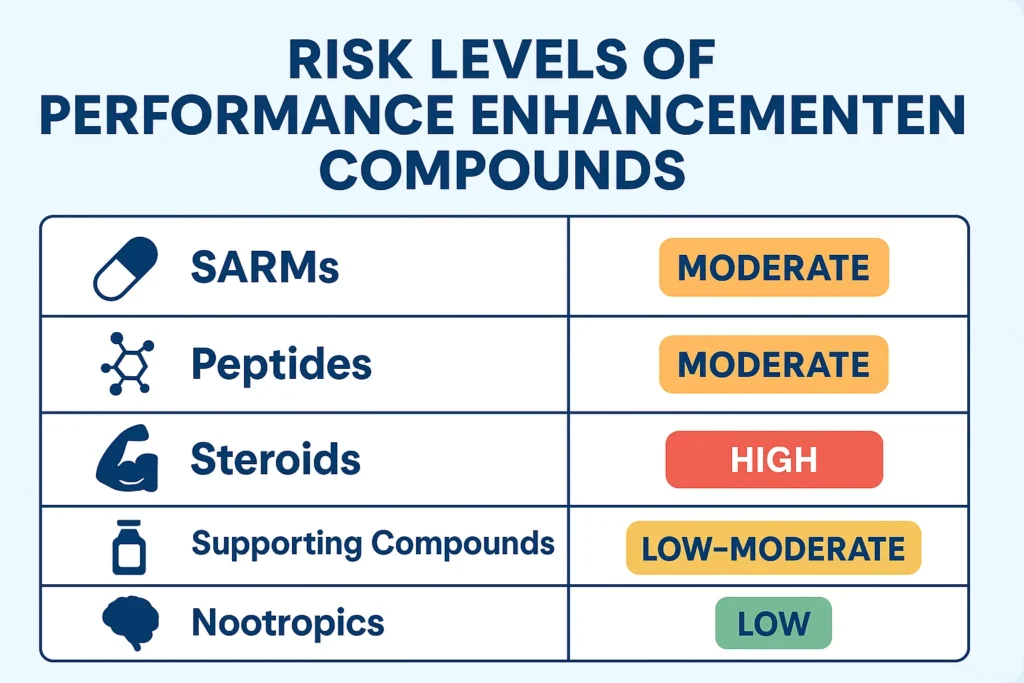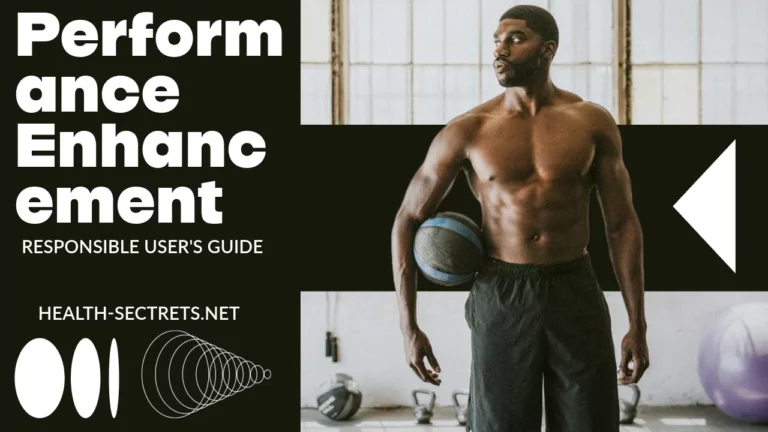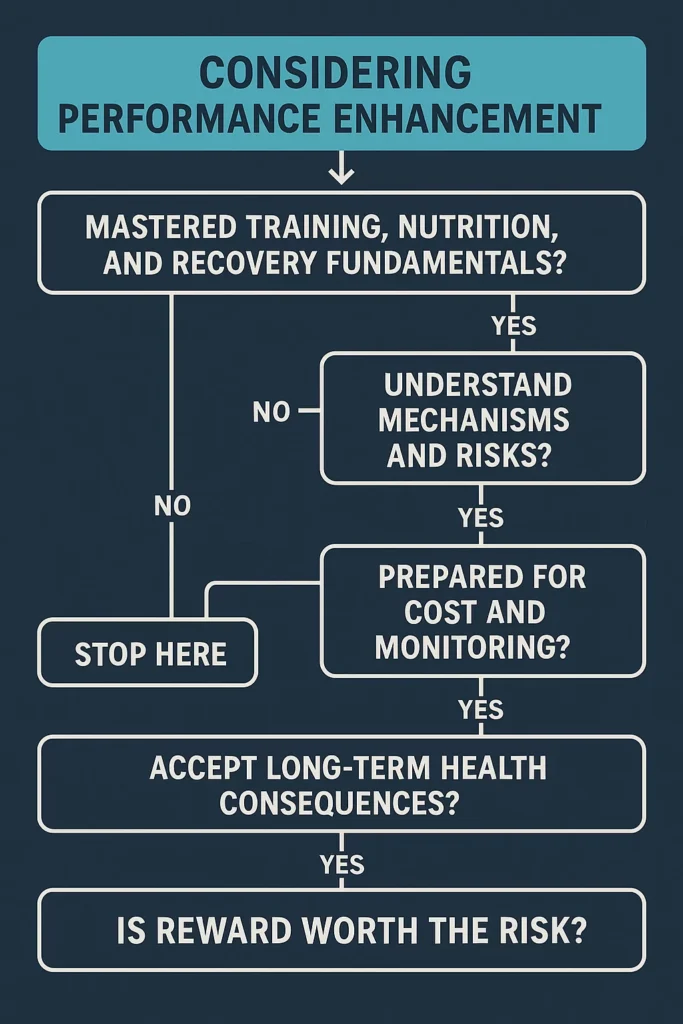You’re here because you want more—to push beyond genetic limits, to recover faster, to look and perform at a level that feels superhuman. That drive is what separates good athletes from great ones. But the landscape of performance enhancement is a minefield of misinformation, biased marketing, and bro-science. Most resources are either fear-mongering or dangerously promotional.
This guide is different. It’s not a “how-to” for use, but a “how-to-think” framework. It’s about making informed, adult decisions based on evidence and a profound respect for the risks. As we’ll explore, the psychological aspects, including body image issues like bigorexia, are just as important to understand as the physical effects.
What Do We Mean By “Performance Enhancement”? A Spectrum of Substances
When we talk about performance enhancement in this context, we’re referring to substances used to significantly alter body composition, strength, and recovery beyond natural potential. It’s crucial to understand that these aren’t simple supplements like protein powder or creatine—they’re compounds with profound effects on your body’s fundamental systems.

The major categories include:
SARMs (Selective Androgen Receptor Modulators): Often marketed as the modern promise of targeted muscle growth with fewer side effects than traditional steroids. While the theory sounds promising, the reality is much more complex, with significant unknowns about long-term effects.
Peptides: These are signaling molecules that influence various bodily processes. Some, like MK-677, stimulate growth hormone release, while others like BPC-157 are researched for tissue repair. Their targeted nature makes them popular, but “research chemical” status means human safety data is limited.
Anabolic-Androgenic Steroids (AAS): The classic, powerful hormones like Testosterone and Trenbolone that directly activate androgen receptors throughout the body. These are the most studied but also carry the most significant legal and health risks.
Supporting Compounds: Aromatase Inhibitors (AIs) and SERMs don’t enhance performance directly but are used to manage the hormonal consequences of other compounds, particularly estrogen-related side effects.
Each class has a unique mechanism, risk profile, and legal status. Lumping them all together is the first mistake many beginners make.
The Foundation: Non-Negotiable Prerequisites
Before researching your first cycle, you must honestly assess your foundation. Performance enhancers are multipliers of your effort and recovery, not magic bullets for a poor foundation.
Are You “Natty-Optimized”? Have you truly maximized your training, nutrition, and sleep for years? Can you point to specific periods of dedicated natural training where you’ve pushed your genetic potential? If you haven’t built a substantial natural foundation, you’re building a house on sand. Consider whether you’re consistently meeting basic health benchmarks like getting 150 minutes of exercise weekly as part of a balanced fitness regimen.
Have Clear, Measurable Goals: “Getting jacked” or “getting stronger” aren’t goals—they’re vague aspirations. A real goal is: “Add 10 pounds of lean mass while staying under 12% bodyfat over 6 months” or “Increase my squat by 50 pounds in 3 months while maintaining current bodyweight.” Without specific metrics, you cannot measure success or justify risk.
Understand the Commitment: This journey requires significant financial resources (blood work, pharmaceuticals, high-quality food) and time dedication that extends far beyond your training sessions. Recovery and monitoring become part-time jobs.
The Pillar of Safety: Your Health is Your Responsibility
If you take nothing else from this guide, remember this: your health is your responsibility. The recreational approach to performance enhancement has ruined lives, while the responsible approach prioritizes safety above all else.
Blood Work is Non-Negotiable: This is your objective health monitoring system. The National Institutes of Health emphasizes the importance of baseline health assessments before any medical intervention. You need:
- Baseline testing before you touch anything
- Mid-cycle testing to monitor impact and adjust support supplements
- Post-cycle testing to confirm your body is recovering
Post-Cycle Therapy (PCT) Understanding: PCT isn’t an “option”—it’s the essential process for restarting your body’s natural hormone production after a suppressive cycle. Thinking you can skip PCT is one of the most dangerous misconceptions in performance enhancement.
Respect the Side Effects: Beyond the commonly discussed acne and hair loss lie more serious risks that can impact your long-term health:
- Cardiovascular strain: Increased LDL cholesterol, decreased HDL, and elevated blood pressure
- Endocrine disruption: Natural testosterone suppression that may become permanent, infertility, and gynecomastia
- Hepatic stress: Liver strain or toxicity, particularly from oral compounds
- Psychological impacts: Mood disorders, aggression, and dependency on your enhanced physique
The Legal and Ethical Landscape
The legal status of performance-enhancing substances varies by country, but in many places, anabolic steroids are controlled substances with serious legal consequences for possession without prescription. The “research chemical” label applied to many SARMs and peptides offers legal protection to sellers but none to consumers, and certainly doesn’t guarantee safety or purity.
The U.S. Drug Enforcement Administration classifies many performance-enhancing compounds as controlled substances due to their potential for abuse and health risks.
Ethically, using banned substances in competitive sports clearly constitutes cheating. But there’s a broader ethical consideration: how does this choice affect those around you, and are you prepared to be a role model for this approach to physical development?
A Framework for Responsible Decision-Making
Before proceeding further, honestly answer these questions:
- Have I truly mastered training, nutrition, and recovery fundamentals? If not, the answer is simple: stop here and focus on your foundation.
- Do I fully understand the mechanisms and risks of the specific compound I’m considering? Could I explain them clearly to someone else? If not, more research is required.
- Am I prepared for the financial cost and time commitment of proper monitoring? Blood work, pharmaceuticals, and high-quality supplements represent a significant ongoing investment.
- Am I willing to accept potential long-term health consequences? This isn’t about temporary side effects—it’s about conditions that may emerge decades later.
The ultimate question: For my specific goals, is the potential reward worth the guaranteed risk?
Knowledge Before Needle, Wisdom Before Vial
The path of performance enhancement isn’t a shortcut—it’s a dangerous detour that requires the most detailed map you can possibly create. Your first “cycle” shouldn’t involve needles or vials; it should be a cycle of intensive research, self-assessment, and preparation.
The most powerful enhancement available isn’t found in a bottle—it’s between your ears. Education, discipline, and patience will serve you better than any compound, both in the gym and in life.
Your journey should continue with our deep dives into understanding performance enhancing drugs and the importance of maintaining both physical and mental health throughout your fitness journey.





